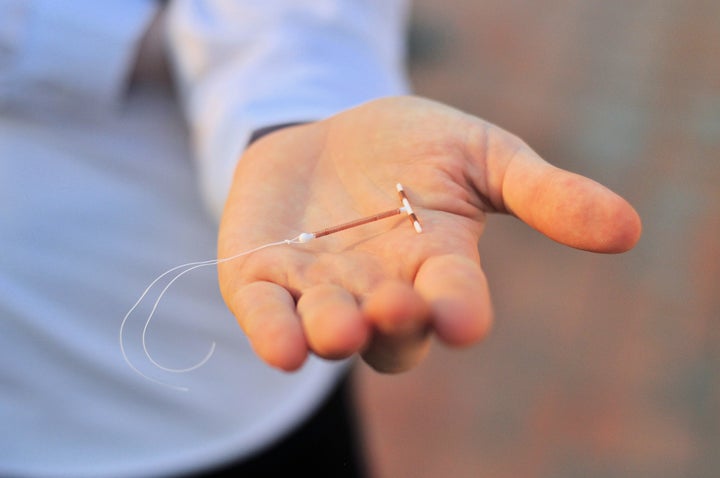“It just feels like a sensible choice it if works for you,” says Jess* from Gloucestershire who has been on the coil for six years, having decided at 18 that she no longer wanted to be taking the contraceptive pill to protect against unwanted pregnancies. “I just never remembered to take it,” she says.
The 23-year-old is one of a growing number of younger women in the UK who are choosing long acting reversible contraceptives (LARC) such as the copper coil, the hormonal coil, the implant or injectables, above pills and condoms.
New NHS England figures, reported by the BBC, showed that 39% of women in 2017 choose to have a LARC fitted, compared to just 21% of women visiting NHS clinics in 2007.

Although oral contraceptives like the pill remain by far the most common single type of contraception - used by 44% of women accessing contraception through sexual health services - their use has fallen in the last decade.
Now women like Jess are going for options previously deemed to only be suitable for older women, or those who had children already. “My mum had one and it worked for her,” she tells HuffPost UK.
The advantages of having LARC, such as the coil, are the lack of hormonal side effects like acne, being able to have non-interrupted sex, the ability to breastfeed, according to the NHS. There is also no evidence that it affects weight gain or increases the risk of cervical, ovarian or breast cancer.
Jess agrees there have been lots of positives for her. “I forget it is there, it is so liberating not having periods - it also saves money and is probably better for the environment with the amount of sanitary products that go to waste,” she says.
And the coil is effective. According to the NHS fewer than 1 in 100 women using the implant or coil will get pregnant: making it 99% effective with perfect use.
Whereas, because the pill has greater room for human error (forgetting to take it) it has a rate of around 9 in every 100 women getting pregnant per year.
Jess says she will now have the coil in place until she starts trying for children.

So why are more women making this decision? It isn’t entirely unplanned. From around 2010 onwards, the NHS in England made a concerted effort to increase awareness of LARCs and to train more staff to fit them.
This increase in awareness in staff has helped with a general understanding in the population. Anatole Menon-Johansson, medical director at sexual health charity Brook, says: “As young people are made aware of the full range of contraceptive methods available to them, more are opting for the longer-term, non hormonal options and if they have a good experience with it they tell their friends – it’s a cascade effect.”
But it is also a result of women no longer wanting to put up with the negative side effects of other forms of contraception, including the pill.
Lottie from East Sussex started taking the contraceptive pill at 21 before switching to the NuvaRing (a hormonal vaginal ring inserted for three weeks of every month) and eventually settling on the coil 12 months ago.
The 23-year-old had “terrible” side effects from the pill, which included six week periods of bleeding, heavy periods and eventually an iron deficiency because she was bleeding so heavily.
She went to a sexual health clinic and was recommended the coil (something her mum had also taken, but got pregnant while using). “I did quite a lot of googling, the main attraction for me was the lack of periods. But contraception is always such a gamble,” she says.
But so far she says the side effects (although there has been some minor cramps and skin breakouts) have been nothing compared to other contraceptive options.
“I don’t have to worry about remembering my pill or the side effects it has on me,” she says. “This is definitely best contraception method I’ve tried so far.”
Menon-Johansson said: “Many young people prefer a method of contraception that they don’t have to remember to take every day.”
Like Jess, Lottie thinks she will be on the coil for the next five years at least.